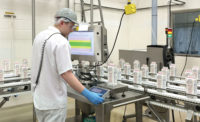Planned obsolescence. It’s an idea I’ve touched upon in a few of my columns in the past. It is, or was, an approach that called for product designs that artificially reduced the life cycle of the products—whether it be in form, function or fashionability—in an attempt to increase sales, or “shorten the replacement cycle.”
Planned obsolescence took hold, and some would say almost killed, the American car industry in the 1970s. Consumers started demanding greater longevity from the products they used. But the essence of planned obsolescence was replaced by rapid technology improvement. Products, like software and smartphones, no longer become obsolete, but rather become something newer, better and almost completely different (think horse and buggy to automobile). They update themselves with great regularity.
I’ve used this analogy in the past, but take for instance, Microsoft’s operating system. It has progressed through a host of “versions” since its inception, including Windows 95, Windows 2000, Windows XP, Vista, with each version striving to incorporate the newest technologies and features consumers want and will make their computing experience easier and/or more enjoyable. The same can be said for the iPhone. Just a year ago, I wrote that Apple was currently touting version 5 of its popular smartphone. As I write this, the iPhone 6 is already on the market.
The difference between this “new” technology driven obsolescence that is far different than its predecessor is the consumer demand for quality, even if they cannot rely on longevity. The companies and products I referenced above can ride a wave of new versions and improved iterations, but they cannot ignore, or plan on, a decrease in form, function or fashionability. Just ask Microsoft and its customers about Vista (think New Coke…but not quite as bad) or Apple and its customers’ reaction to whether the iPhone 6 was an improvement over version 5.
With all of this in mind, enter the next evolution of the idea of planned obsolescence, or rather anti-obsolescence—future proofing.
The concept is to protect products from consequences in the future, to ensure, even guarantee, they will continue to be of value in the distant future, not superseded by another version. In essence, to guard against their obsolescence.
Future-proofing is a process, one of “anticipating the future and developing methods of minimizing the effects of shocks and stresses of future events.” Just a few of the guiding principles include stimulate flexibility and adaptability, extend service life, fortify against extreme weather and shortages of materials and energy, increase durability and redundancy, consider long-term life-cycle benefits, and incorporate local materials, parts and labor.
The idea is already commonly found in electronics, data storage, and communications systems. It is also found in industrial design, computers, software, health care and medical, strategic sustainable development, strategic management consultancy and product design. Part of the reason for its breadth is the process encourages examination of other industries’ processes and applying them to your future-proofing procedures.
And to help you along, check out this month’s software article, “Future Proofing Your SPC Software.”
As always, enjoy and thanks for reading!
Darryl Seland, Editorial Director


